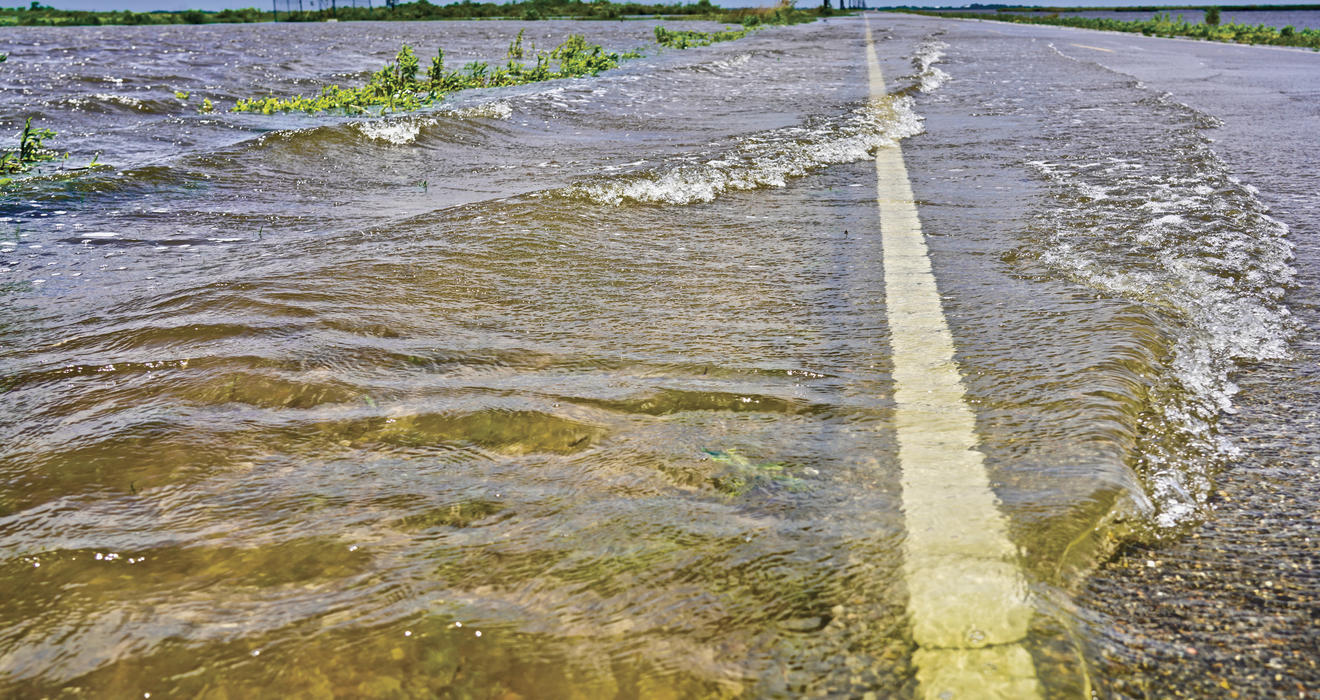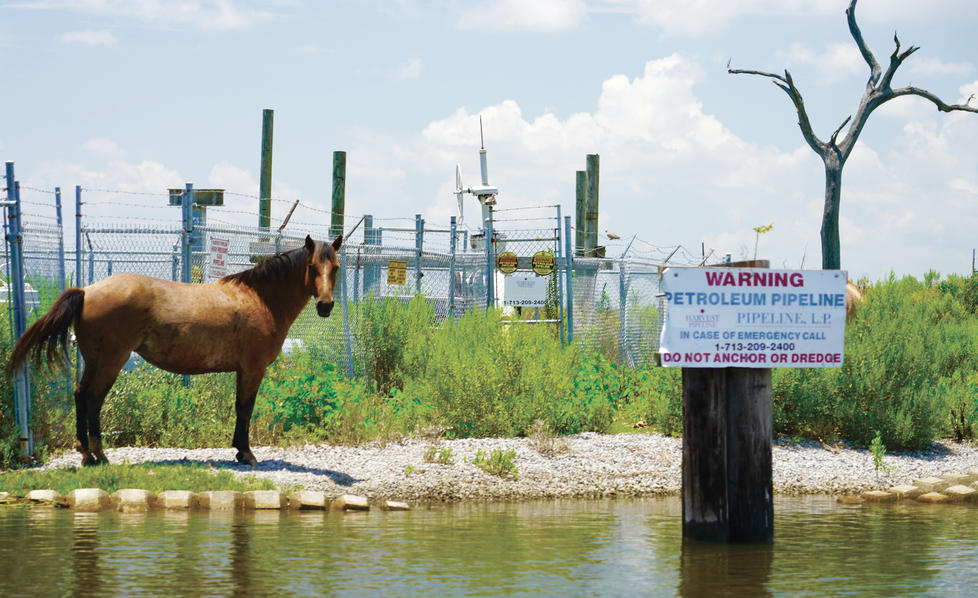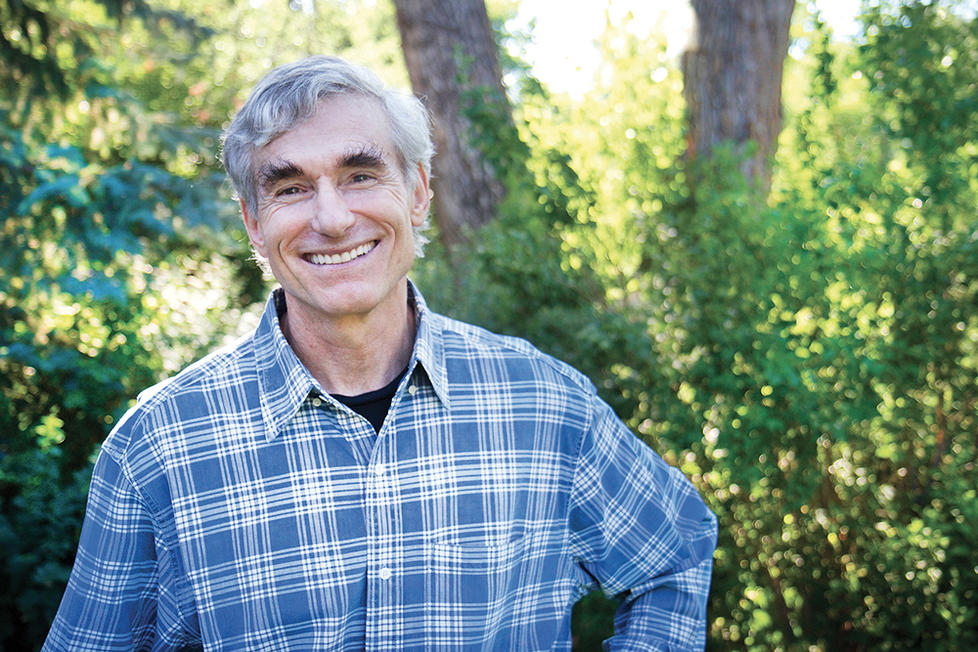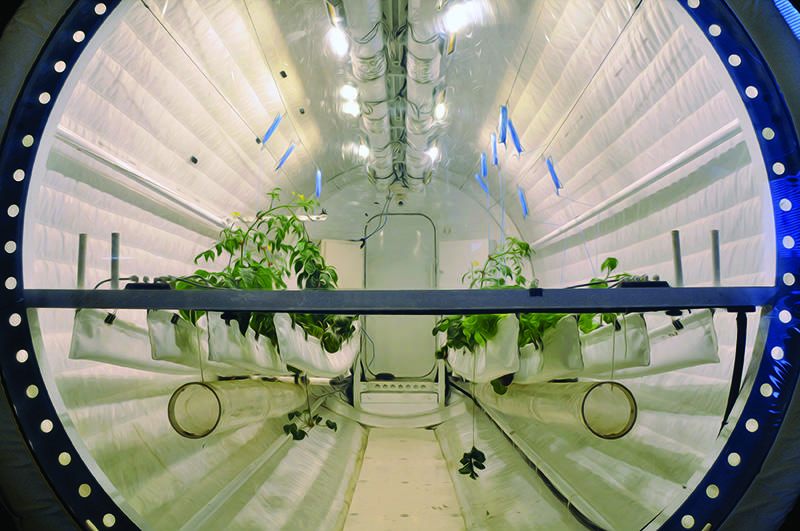
Humans as Nature
Princetonians in the environmental humanities add new dimensions to climate research
A literary scholar profiles environmental activists murdered for their cause. A Byzantine historian collaborates with scientists to investigate how climate change affected the agricultural economy of a small settlement in Anatolia. A political philosopher draws on Plato’s Republic to imagine ways of building a sustainable future.
As Princeton’s scientists and engineers deploy the tools of their specialties to engage urgently with the perils facing the planet, University scholars in an array of humanities disciplines are doing the same thing. Practitioners of an emerging multidisciplinary academic field known by the shorthand “environmental humanities,” these scholars are using their training in such domains as history, philosophy, literature, religion, and the arts to explore profound questions about human involvement with the natural world.
The environmental humanities “takes really seriously the social, cultural, and imaginative dimensions of both historical and contemporary environmental phenomena and challenges,” says Allison Carruth, a Princeton professor of American studies and environmental studies, whose recent work explores tensions between technological and artistic views of the human place in nature. “It presumes that those social and cultural-imagined dimensions are just as vital to understand and to work within as the scientific, technical, and political ones.”
A variety of scholarly approaches fall under the rubric of environmental humanities. The term encompasses collaborations between scientists and humanists, such as Princeton’s Climate Change and History Research Initiative, which brings together historians, archaeologists, and paleoecologists to study the impact of two millennia of climate change on Eastern Mediterranean and Eastern Eurasian societies. Environmental humanities may also encompass efforts by scholars in the humanities, and in humanistic branches of the social sciences, to bring the tools of their own disciplines to bear on environmental issues: Anne McClintock, a Princeton professor of gender studies and environmental humanities, uses writing and photography to document the impact of climate change from Louisiana to Iceland; teaches a course on animals in film, photography, and popular culture; and is finishing a book about the links among environmental crises, militarization, and settler colonialism. The environmental humanities may entail public-facing initiatives, such as the provocative public art projects of writer and artist Jenny Price ’85, which critique existing environmental arrangements and dramatize alternatives. And by treating humanity as part of nature, rather than distinct from it, the field may open up space within the academy for a conceptual reimagining of the essence of the humanities themselves.
In all these forms, the environmental humanities are neither an intellectual afterthought nor a mere vehicle for marketing scientific findings to a mass audience, scholars say. Instead, the field has its own crucial role to play in helping people — the “humans” in humanities — understand the historical roots of today’s challenges, frame the ethical dimensions of contemporary dilemmas, and imagine a just and sustainable way forward.
“If we don’t embrace all the disciplines and all forms of knowledge, we don’t have much hope of truly engaging these great planetary crises,” says McClintock. “The climate crisis isn’t just a crisis of climate. It’s also a crisis of perception, and it’s a crisis of narrative, and a crisis of the imagination.”
Humanities scholars have wrestled with environmental questions for decades, but as a distinct area of inquiry, the field of environmental humanities is a relative newcomer, dating back perhaps 15 or 20 years. That very novelty underlines how dominated the academy has traditionally been by the sharp division between nature and culture, science and humanities, that grew out of the European Enlightenment.
“We’ve had a shifting recognition that there is no nature-culture divide, that culture shapes nature and nature shapes culture,” says Rob Nixon, a Princeton professor of English and environmental humanities, whose work examines the ways that images and stories can advance movements for social change. “But if we look at the disciplinary structures in the university system, they still reflect that divide.”
Because many Indigenous and non-Western societies drew no bright line between human beings and the natural world, some scholars see the environmental humanities as a circling-back to that older, alternative way of seeing things. It’s a perspective that opens space for questioning the assumption — implicit in the very word “humanities” — that human beings stand at the center of experience.
“Human beings are not the only actors who make history,” University of Wisconsin-Madison environmental historian William Cronon wrote in a seminal 1993 essay. “Other creatures do too, as do large natural processes …. There cannot be people outside of nature; there can only be people thinking they are outside of nature.”
The seeds of Princeton’s engagement with the environmental humanities were planted in the early 1990s, when then-president Harold T. Shapiro *64 began the work that eventually led to the founding in 1994 of the Princeton Environmental Institute, now known as the High Meadows Environmental Institute (HMEI). Then-trustee T.A. Barron ’74, an undergraduate history and politics major who had left a career in finance to write fiction, asked Shapiro how the humanities fit into plans to strengthen Princeton’s environmental studies program.
Shapiro told Barron that the humanities would come later, once a foundation had been laid in fields like science, engineering, and public policy — fields in which Princeton already had faculty strength in environmental studies, and for which funding was more readily available. By the first decade of the 21st century, Barron decided this foundation had been securely established, and he began working with University officials and faculty to promote the environmental humanities at Princeton.
Since then, Barron and his wife, Currie Barron, have contributed millions to endow a range of environmental humanities programs, including a visiting professorship, a permanent professorship, two first-year seminars, an undergraduate prize for environmental leadership, and a biodiversity initiative that seeks to foster interdisciplinary research. Today, more than two dozen humanities faculty members work actively with HMEI, four of them with partial appointments in the institute. This academic year, HMEI is directly sponsoring four environmental humanities courses for undergraduates and cross-listing another 12, on topics ranging from land use to film studies to French environmental politics. And each spring, dozens of undergraduates, some of them humanities majors, graduate with a certificate — soon to become a minor — in environmental studies, a program that requires participants to take at least two environmentally-focused humanities or social-science courses.
Noncurricular offerings have expanded, as well. The Fluid Futures Forum, founded this year by McClintock, the gender-studies and environmental humanities professor, provides a place for scientists and humanists to come together in discussions of water-related challenges; the 6-year-old Environmental Humanities and Social Transformation Colloquium, co-convened by McClintock and Nixon, the English and environmental humanities professor, has invited speakers from inside and outside the University to present research on everything from the European migrant crisis to biodiversity in the Korean Demilitarized Zone. And as a marker of its interdisciplinary mission, HMEI’s new campus home, currently under construction on Ivy Lane and expected to open in 2025, will include an art gallery hosting rotating exhibitions. “We’ve actually had a specific intention to make it not a science building, but a building that felt welcoming and invited the humanities into the community,” says HMEI executive director Katharine B. Hackett ’79.
The interdisciplinary engagement between the humanities and the sciences has its challenges, scholars say. By collaborating with a scientist who studies fossilized pollen, John F. Haldon, a now-retired Princeton history professor who directs the Climate Change and History Research Initiative, has captured otherwise unrecoverable information about the role that climate change played in the development of a community in Anatolia, in what is now Turkey. But such collaborations require that both scientists and historians learn not to draw simplistic conclusions from each other’s discoveries — “ ‘Ah — causal connection: The Roman Empire fell because of climate change, or an outbreak of plague,’ ” Haldon says. “It’s never as easy as that.”
Even terminology can pose unexpected problems. Ten years ago, at a meeting to launch the research initiative, a geologist was discussing a “crisis” that had occurred some 9,000 years earlier, Haldon recalls. It turned out that the geologist’s crisis had lasted 600 years — an eternity for historians, whose idea of a crisis is an event lasting just a few years, or even months.
“We’re all speaking specialized languages that are tools that we’ve developed to talk to smaller communities, and they serve those purposes,” says Melissa Lane, a politics professor and director of the University Center for Human Values, whose 2011 book Eco-Republic used ancient Greek ideas to examine contemporary environmental problems. “But then there’s always a challenge of translating.”
If professional academics sometimes find interdisciplinarity difficult, however, their undergraduates are enormously receptive, say scholars in the environmental humanities: Whatever discipline they specialize in, students are hungry to engage with the environmental perils they face, especially climate change.
“They — this generation — want to work on problems. They want deep training and expertise, but they don’t want to be siloed,” says Carruth, the American studies and environmental humanities professor. “They want to have a toolkit that includes the methods, materials, and commitments of the humanities.”
On and off campus, Princetonians are deploying those tools in multiple ways. Last spring, students in a course taught by photography professor Jeff Whetstone, the director of the Program in Visual Arts, trained a motion-activated camera on a fox den near campus, capturing and posting on Instagram vivid scenes of life and death in a beleaguered patch of wilderness. The environmental media lab that Carruth runs is exploring ways of using podcasts, animation, and augmented reality to communicate its research and experiment with environmental storytelling. And the next book by Nixon, the English and environmental humanities professor, will profile environmental martyrs — murdered activists in countries from Costa Rica to Cambodia.
“With martyrdom, the focus is so much on the iconic death, and so what I’m focusing on is the lives and values,” Nixon says. “What are the environmental values that people decided were worth dying for?”
Princeton alumni are bringing the environmental humanities into their work in the world beyond the University’s walls. Price was a biology major who went on to earn a doctorate in history and is now a research fellow at Washington University’s art and design school; among her collaborative public art projects is a satirical website that uses federal data on Superfund sites near St. Louis to spotlight the consumption economy that spawns toxic-waste pollution. As an undergraduate engineering major, Noah Mihan ’19 founded the Princeton Conservation Society, whose projects have included filming documentaries on coral bleaching in Puerto Rico and rainforest restoration in Indonesia; now Mihan works for a a nonprofit founded by wildlife educators Chris and Martin Kratt that teaches children about conservation. And English major Ben Weissenbach ’20 is turning his senior thesis on climate change in far northern Alaska into a narrative nonfiction book exploring the environmental consciousness of his digital-native generation.
All these projects exemplify what Barron, the author and alumni donor, sees as a key aspect of the humanities’ power: their storytelling mission. “We who understand the perils facing our planet are much too quick to list the problems and dump loads of data on people, when in fact what we really need to do is tell a good story, a story that connects with them and their lives,” Barron says. “The stories we tell can envision a new relationship with nature and the world, can ask really tough questions, can also inspire people to renew their commitment and their hope and change behavior.”
Princeton scientists agree. When it comes to climate change, “the technical solutions are not that hard at this point. We know what we need to do,” says Reed Maxwell, a professor of civil and environmental engineering. “It’s really more about how do we do it? How do we bring people along? And engineers are not trained to do that.”
But if the environmental humanities have a role to play in communicating the content and gravity of scientific findings, the field is not simply a public relations department for the sciences, scholars say: Just as environmental scientists and engineers create valuable and important new forms of knowledge, so too do those working in the environmental humanities.
“It’s not just that all knowledge is scientific knowledge, and then the humanities help us understand it. Humans are the kind of creatures who can’t be studied all the way down in measurable terms,” says religion scholar Alda Balthrop-Lewis *17, a senior research fellow in the Institute for Religion and Critical Inquiry at Australian Catholic University in Melbourne, who has written about Henry David Thoreau’s environmental and political thought. “And everything that escapes measurement about us — which is a lot of things — we have to have these interpretive methods to investigate and think about and talk to one another about.”
The humanities, scholars say, can play an important role in considering questions that science does not typically ask — questions about justice and equity, about the ethics of decision-making and resource allocation, and about whose voices count in these conversations.
In his courses on climate science and policy, Michael Oppenheimer, a Princeton professor of geosciences and international affairs, asks his students to read works of history and journalism exploring tragedies — the 1986 space-shuttle explosion, the lethal 2003 Paris heat wave — that resulted from institutional failures or were magnified by societal inequities. Students don’t always “think about vulnerability, the distribution of vulnerability across society, how certain groups are more vulnerable,” Oppenheimer says. “You have to read books to be able to put yourself in somebody else’s place who’s very different than you. And that’s the value of humanities, in a way: to get students to understand people who aren’t like them and don’t live under circumstances like them, yet face immense challenges.”
In the process, the humanities can help amplify voices that have not always been heeded in global environmental discourse, including those of Indigenous people and the poor, says Carruth, the American studies and environmental humanities professor. Historically, scientific and journalistic conversations about issues such as pollution, climate change, and public health “have left a lot of knowledge and a lot of people out,” she says. “The humanities is one way in, in being more inclusive with what counts as expertise, whose experience and histories are attended to. The relationship between people and place and between nature and culture is not universal. And I think at their best, the humanities and allied social sciences do culturally and historically specific work on how folks come to understand their relationship to one another — past, present, future — and to the nonhuman world.”
“Good luck doing anything about climate change unless you understand why so many people don’t believe in it, why even the people who are scared aren’t really doing much, why are we focusing on individual solutions that aren’t going to do squat, instead of really understanding the big systemic causes of climate change.”
Jenny Price ’85
Writer and Artist
Asking these basic questions about justice, fairness, and socioeconomic conditions is not just an intellectual exercise but an essential way of addressing the climate crisis, says Price, the creator of public art. “Good luck doing anything about climate change unless you understand why so many people don’t believe in it, why even the people who are scared aren’t really doing much, why are we focusing on individual solutions that aren’t going to do squat, instead of really understanding the big systemic causes of climate change,” she says. “If we leave climate change to quantitative ways of knowing, we’re screwed — just to say it bluntly — because you’re not asking questions that are absolutely essential.”
But while some environmental humanists pay close attention to vast global issues, others argue that it makes equal sense to devote a similar level of attention to local challenges and context. On the wooded spot near campus where Whetstone’s visual arts class filmed the fox den, his students erected a two-foot-high, tombstone-like marble marker engraved with the word “WILD” — a small reminder to anyone who might one day seek to pave over that scrappy little patch of undeveloped land. Protecting the faraway Amazon rainforest is such a huge, daunting task that “I don’t even know where to start. And I think that can lead to a lot of despair,” says Whetstone, whose current photography project spotlights uncharismatic fauna such as earthworms. “But there are things we can do, and they’re close by. And I think that if we can reframe what we think nature is, maybe we can be better stewards of it.”
Ultimately, the environmental humanities also provide a space for imagining what our future on a changed planet could look like, scholars say. “As much as we can approach climate change as [an] apocalyptic end-of-the-world situation, it’s also important for us to think about, ‘Well, what would happen if we survived this thing?’ ” says Princeton anthropology professor Ryo Morimoto, whose research has focused on people living near the site of the 2011 nuclear accident in Fukushima, Japan. “What are the visions that we want to enable by saving the planet?”
Sometimes a vision of the future grows out of an understanding of how older societies coped with similar crises, says Haldon, the historian. “We can learn a lot from the past about what it is that enables some societies to be relatively sustainable over a long period and why others fail,” he says. “The ability of a society to respond in a sustainable or resilient way to a significant environmental challenge — only in extreme examples does it depend on the severity of the challenge. Mostly, it depends on the cohesion and the structure of the society itself.”
And sometimes that vision of the future is a matter of assessing what we value, what our purpose is, what we want our lives to mean — the kinds of questions that the humanities have been asking for thousands of years.
“The ways of life we rely upon are transitioning, changing, and are going to keep changing. Even if the way we address climate change is through political theory and action, there’s still so many really, really important questions that we’re all living with that we shouldn’t set aside,” says Balthrop-Lewis, the religion scholar. “How do we integrate the losses that we’re experiencing? What do they motivate us to build in our communities, even as they are transforming and some parts of them are passing away? Those questions are not about solving anything, really. They’re about how to live in really difficult circumstances.”
Deborah Yaffe is a freelance writer based in Princeton Junction, New Jersey.
Environmental Humanities in the Classroom
This semester, the High Meadows Environmental Institute is sponsoring or cross-listing an array of environmentally focused humanities courses. Among the offerings:
Environmental Racism
(American Studies, Latin American Studies, Environmental Studies)
Examines the racial politics of such environmental issues as food consumption and climate change, across varied historical periods and around the globe.
Instructor: Juan M. Rubio, postdoctoral research associate in the Effron Center for the Study of America
The Literature of Environmental Disaster
(French, Comparative Literature, Environmental Studies)
Discusses classic and contemporary novels, films, plays, and essays from France, Russia, India, Nigeria, Japan, and the United States.
Instructor: Göran M. Blix, professor of French and Italian
Nuclear Princeton: An Indigenous Approach to Science, Technology, and the Environment
(Anthropology, American Studies, Environmental Studies)
Explores Princeton’s involvement in the development of nuclear science and the impact of that work on Native lands and communities.
Instructor: Ryo Morimoto, assistant professor of anthropology
Oil, Energy, and the Middle East
(Near Eastern Studies, Energy Studies, Environmental Studies)
Offers an overview of the history, politics, and economics of the Middle East’s oil reserves.
Instructor: Bernard A. Haykel, professor of Near Eastern studies
Venice, Theater of the World
(Music, European Cultural Studies, Environmental Studies)
Examines a thousand years of music, art, literature, and culture in a city with a unique environmental situation.
Instructor: Jamie L. Reuland, assistant professor of music












2 Responses
Mark Ramsay ’76
2 Years AgoClimate Narratives
Jenny Price ’85’s quote on p. 35 (“Humans as Nature,” April issue) is telling, that the climate agenda’s thought processes and policies are confused and thereby causing difficulty getting public traction.
Published narratives have outrun climate science maturity ever since the 1970s when the reported fear was a nascent ice age. Unlike the Manhattan Project and the moon launch program, we’ve accepted non-scientists to lead this field. Such leadership has engendered IPCC Rule #2 for policymakers whereby changes to supporting scientific papers “are limited to those necessary to ensure consistency with the Summary for Policymakers.” In other words, politics runs the IPCC show, causing suppression of conflicting research results, and our confusion.
For those interested in learning more about net-zero policy implications, check out three recent debates among top scientists. These are the Koonin-Socolow, Koonin-Dessler, and Happer-Karoly debates (use a search engine). Climate scientific work the last five or so years has exploded in volume. This work can be found at CO2Coalition.org and RealClearEnergy.org. Emeritus physics professor William Happer *64 lives in Princeton.
Lindianne Sarno Sappington ’76
2 Years AgoAtmospheric Carbon Is the Basis of Life
I found in PAW’s April 2023 Climate Issue numerous references to carbon emissions effect on Earth’s air and water — but no reference to carbon sequestration in living soil. Earth’s soils have unlimited capacity to sequester carbon, hold water, and grow increasingly rich and dark while reversing desertification. Soil loss of carbon is of more concern than increase of carbon in the atmosphere.
Climate scientists talk about carbon sequestration, but they don’t actually do it. Carbon is sequestered by no-till farmers, ranchers engaged in planned rotational grazing, tropical gardeners planting food forests, permaculturists building swales and terraces to hold water in the soil, subsistence farmers Farming God’s Way, among the many effective techniques of regenerative agriculture. The Sahel, just south of the Sahara, has been re-greening in recent decades. Increases in CO2 favor enhanced plant growth.
When atmospheric carbon (the basis of photosynthesis) drops below 250 ppm, plant growth stops. (See Plant Responses to Low CO2 of the Past.) Greenhouses pump CO2 into their atmosphere to enhance plant growth. Atmospheric carbon rose to 6000-9000 ppm during the Ordovician Period when life thrived on this planet.
Conservative Princeton Association (CPA) is pleased to sponsor an event at Reunions 2023, Why Climate Change is Not an Emergency (May 27, 11 a.m., Lewis Library Room 138). Check your assumptions at the door!
Students and alumni are invited to join CPA’s lively discussion group for conservatives, libertarians and constitutionalists on Tigernet. Questions, email lindianne@snakerivermusicgardens.org.